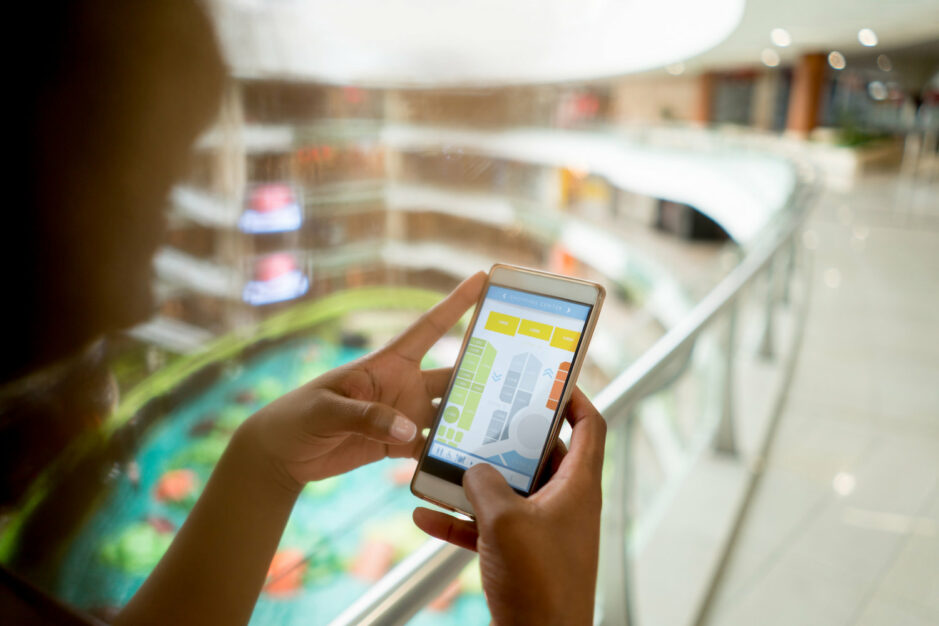Technology Keeps Shoppers Visiting Malls
CREtech Blog

Today the retail landscape looks more like a screen than a shopping mall. Online shopping is swallowing a huge bite of the retail landscape. Just look at Amazon’s dominance and Wal-mart’s push to catch up with its new online initiatives. Stories about major retailers shuttering locations pop up every week. Still, on-location shopping is not dead. It’s just changing, and retailers are utilizing technology to maximize a customer’s experience before they walk through the door.
Frustration-free Parking
Shopping starts with parking. New mobile apps ease the parking frustration in high traffic centers. See SMS Valet, which texts a digital ticket upon drop off. When the mall visit is finished, customers use the app to request their vehicle for pick-up. Westfield, a global high-end shopping center and mall operator, announced it’s developing an app for overseas locations that shares where to find available parking spots. Stateside, a Westfield New Jersey location partnered to create a Pay to Park mobile app. Other shopping centers in high urban areas are offering ways to pay for parking via mobile devices instead of dealing with tickets.
Pedestrian Flow
How a consumer moves through the shopping experience matters, too. Sensors monitor everything about a space: how many people pass through, how long they linger, how long it takes to check-out. Check out Traf-Sys and ShopperTrak for examples. Consumers are less patient than before. To keep consumers from becoming frustrated with a brand, some retailers monitor checkout lines. By opening more lines during peak times, customers keep moving forward and spend less time waiting in line.
Mobile Wayfinding
What if you can’t find the store you’re looking for? The old method involved hunting down a directory stand. Today shopping centers help customers navigate their complexes to the right stores with wayfinding apps. See indoor mapping providers 3D Wayfinder or MazeMap. Some downloadable wayfinding apps offer an advanced display that allows users to zoom in and out, switch floors, search stores, and get step-by-step navigation. No more hunting for the directory stand or figuring out which direction towards Macy’s or Dillard’s.
Pickup in Store
For customers unwilling to wait two days for expedited shipping, more retail centers are offering online buyers to collect in store. Take Walmart and Apple as an example. Both offer free in-store pickup. Besides saving on shipping costs, there’s a clear advantage for the retailer. Shoppers who come in to pick up their same-day purchase are more likely to add more products to their purchase.
Mobile Promotion
Once a customer is on-location, malls use apps to keep them engaged. Take the mobile app StepsAway. The platform leverages a person’s interest in shopping, as indicated by their presence in the mall, to inform them about real-time promotions. The promise of a sale lures the consumer into stores in typically low-traffic mall areas. StepsAway is accessible on a free mall Wi-Fi network that promotes local sales and events.
With technology driving the next generation of mall shoppers, retailers need to create new ways to engage customers. Online shopping may dominate consumer buying habits, but retail centers remain an important part of the shopping experience. For this reason alone, the mall is not dead.
DON'T MISS OUR UPCOMING CRE // TECH EVENTS IN LOS ANGELES ON SEPTEMBER 28TH AND NEW YORK ON DECEMBER 7TH! TICKETS ARE ON SALE NOW!
